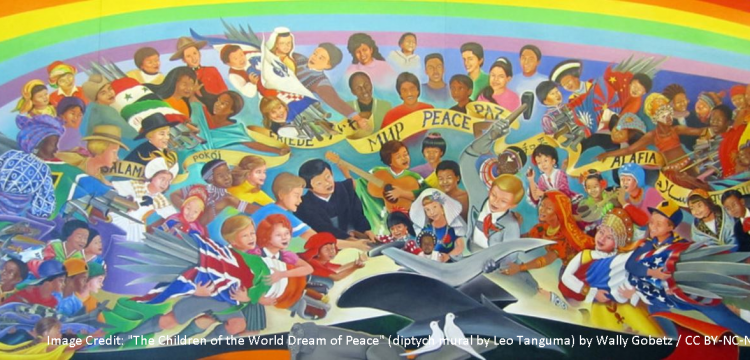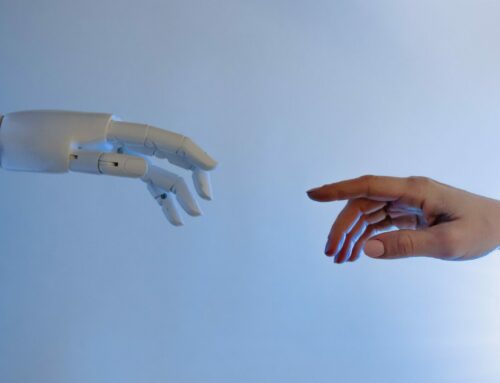Towards higher education in service of humanity
Patrick Blessinger and Mandla Makhanya
St. John’s University (NYC), USA and University of South Africa
The growing importance of education at all levels and the inclusion of more stakeholders in the educational enterprise has sparked debate about the fundamental nature and purpose of higher education (that is, what type of good is education?). Traditionally, viewed from an economic perspective, higher education has been treated largely as a public good.
Since the United Nations Universal Declaration of Human Rights was adopted in 1948, this public good view has been reinforced by the view that education is also a human right. These factors, together with the increased demand for higher education to meet the economic development needs of the post-World War II economies, resulted in a huge increase in government support for higher education. This factor further solidified the notion of higher education as a public good.
However, since the 1980s with the introduction of new business models (for example, for-profit universities) and new delivery modes (for example, online), together with increased demand for higher education and decreased government funding for public universities due to competing priorities in government budgets, categorising higher education has become more convoluted.
As a result, more people, including some educational leaders and policy-makers, are increasingly inclined to treat higher education more like a private good than a public good.
A reconceptualisation of higher education
According to conventional economic thinking, the question about who should bear the cost of higher education centres around who receives the benefits from higher education – society or the individual? The underlying economic premise is that those receiving the benefits should bear a proportional share of the costs that are incurred in provisioning those benefits.
This economic-oriented view of education has also provided support for the rationale that students should be treated as customers and that education should be treated as a commodity.
So, according to this rationale, if higher education is a purely public good, then the burden of funding should be covered by the government (that is, the entity representing society or the community), but if higher education is a purely private good then the burden of funding should be covered by the students (that is, those directly receiving the education).
However, since higher education has characteristics of both a private and a public good then some would argue that the cost burden should be shared by all beneficiaries, in which case it could be considered a mixed good or a merit good, but this still confines the analysis to strict economic arguments.
Further complicating the analysis is the fact that in some countries university tuition and living expenses have risen very dramatically in the past few decades. In the United States, for example, total student loan debt has reached US$1.5 trillion.
More people are voicing concerns about the fairness and stability of a system that burdens so many with so much debt in order to get a higher education. To deal with this growing crisis, New York State, for example, now offers tuition-fee-free public higher education for qualifying students.
Problems arise when one looks at higher education only from the restrictive definition of economic science. Rather, given the wide-ranging nature, purpose and benefits of higher education, a more comprehensive, multidisciplinary view seems appropriate.
In light of the new developments in open education, lifelong and life-wide learning, democratisation of higher education and the equity and inclusion principles of higher education, it seems more appropriate that higher education should be conceptualised from a humanistic perspective rather than a purely economic one.
From an economic perspective, higher education is viewed from a utilitarian cost-benefit analysis. However, from a humanistic perspective, higher education is treated as a human right which transcends the utilitarian perspective.
Since humanism is based on social justice and self-determination principles, a humanistic perspective represents a more holistic view of human development. As such, it includes the political, economic, sociocultural, ethical and ecological dimensions of higher education. The cornerstones of the humanistic perspective are equality, equity and inclusion.
Shifting the paradigm with equity and inclusion
In a humanistic approach to higher education, equity and inclusion are cornerstones of a diversified higher education system where different institutional types (for example, continuing/further education, technical colleges, community colleges, liberal arts colleges, universities and open education) address a wide range of social and individual needs. A one-size-fits-all institutional type is less likely to meet all the varied and changing needs of a pluralistic democratic society.
To ensure equity and inclusion principles are honoured across all institutional types, accreditation bodies, government agencies and educational non-governmental organisations must provide the necessary oversight and support to ensure that high academic quality and ethical behaviour is practised.
According to Barbara Daviet from the French education ministry: “Common goods are those that contribute to the general interest, enabling society as a whole to be reinforced and to function better, as well as individuals to live better. Therefore, common goods must benefit all.”
Daviet summarises this notion of education using the following conceptual model:
Equity > Democratic decision processes > Variety of providers (with the state as guarantor of equity)
Higher education for lifelong learning
The notion of common good is not new – it has a long history, most notably associated with the works of John Locke, Adam Smith, Jean-Jacques Rousseau and John Rawls, among others.
In education, society receives many benefits from higher education, not only in terms of economic growth, innovation and increased quality of life, but also in terms of strengthening democracy, developing civil society, forging shared culture and inculcating habits of mind and heart needed in contemporary society.
In the final analysis, the main justification for the existence of a higher education institution is that it fulfils its mission by adequately serving the contemporary needs of its constituents. Therefore, colleges and universities must continually assess the relevance of their mission and goals and frequently evaluate their effectiveness in achieving those outcomes.
In addition, higher education as a common good and for the common good implies that every person learns throughout the course of life and, as such, the freedom to pursue lifelong education should not be infringed. Given the fact that one’s needs change throughout life further implies that a highly differentiated system of affordable higher education allows one to more effectively address those changing life needs.
The vision of the University of South Africa sums it up quite well: education in the service of humanity.
Patrick Blessinger is an adjunct associate professor of education at St John’s University, New York City, US, and chief research scientist for the International Higher Education Teaching and Learning Association. Mandla Makhanya is principal, vice-chancellor and professor at the University of South Africa.
Suggested Citation:
Blessinger, P. & Makhanya, M. (2018). Towards higher education in service of humanity, Higher Education Tomorrow, Volume 5, Article 1, https://www.patrickblessinger.com/towards-higher-education-in-service-of-humanity
Or
Blessinger, P. & Makhanya, M. (2018). Towards higher education in service of humanity, University World News, http://www.universityworldnews.com/article.php?story=20180130100345559
Copyright © [2018] Patrick Blessinger and Mandla Makhanya
Disclaimer
Opinions expressed in this article are those of the author, and as such do not necessarily represent the position(s) of other professionals or any institution.




